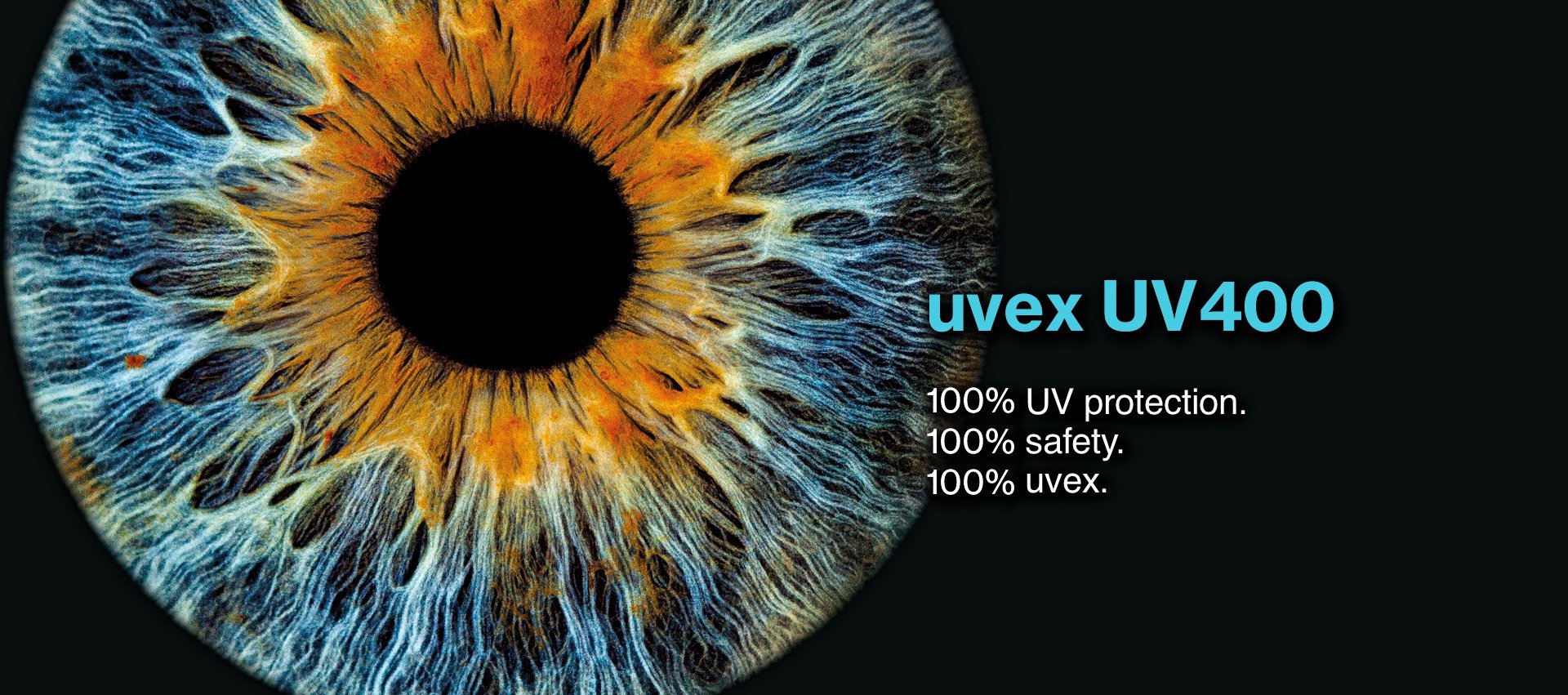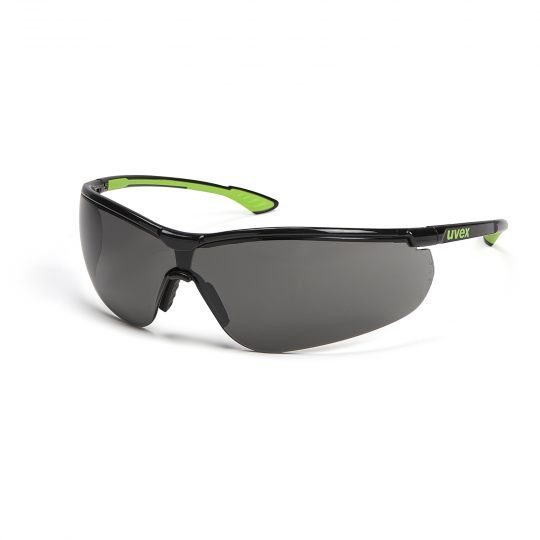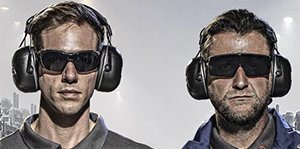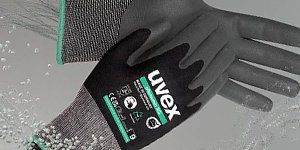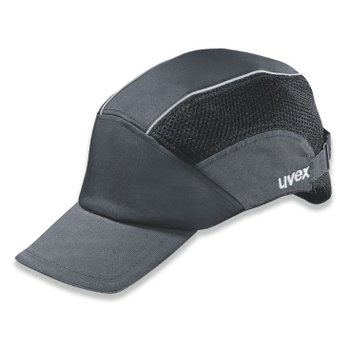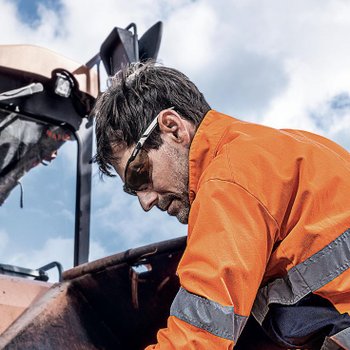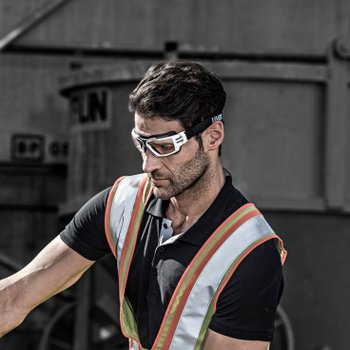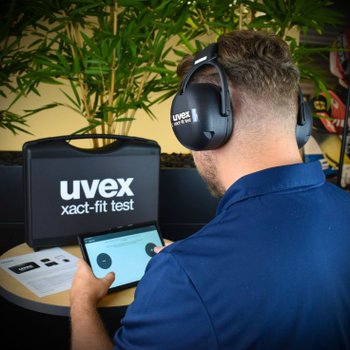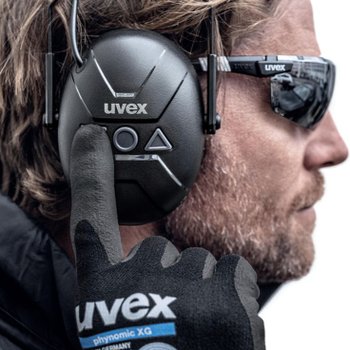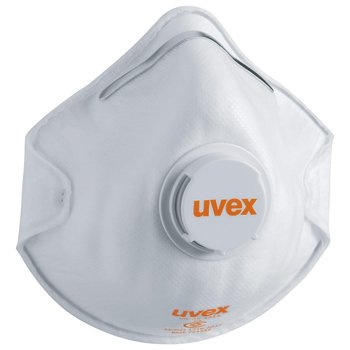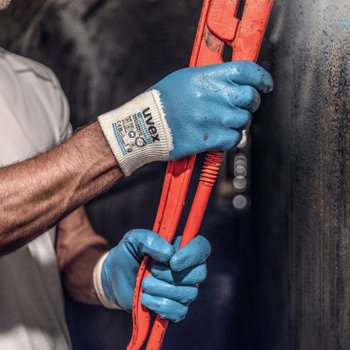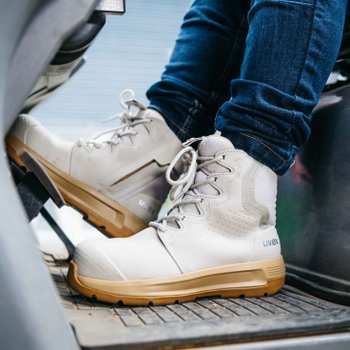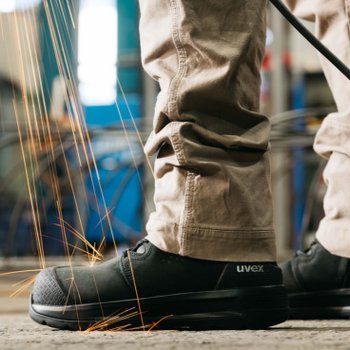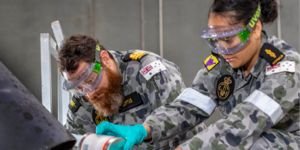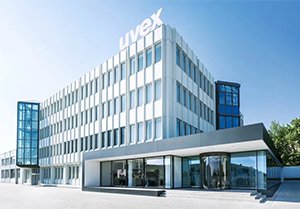uvex UV400 — 100% protection against UVB and UVA radiation
The World Health Organisation (WHO) recommends UV protection up to 400 nm
Most industrial safety eyewear only complies with the industry standard, which prescribes protection up to 380 nanometres. The latest scientific findings show that this is not enough. Although it offers 100% protection against UVB rays, it only provides partial protection against equally dangerous UVA radiation.
uvex UV400
offers complete protection against UVA and UVB radiation as well as high energy visible light (HEV) up to a wavelength of 400nm.
uvex UV400
minimises the thermal impact on cells (10 times greater in the 380-400nm range) which can damage and alter the cell structure.
uvex UV400
reduces the aggressive blue light fraction (HEV), that is harmful to the retina by 15%.
uvex UV400
protects the eyes and surrounding skin from dangerous long-term damage.

"The outer tissues of the eye, cornea and lens fully absorb UV light. While UVB light primarily damages the genetic material, UVA rays penetrate deeper, cause thermal damage and magnify the effects of UVB light. The reasons why the WHO recommends UV400 protection are clear "
Univ.-Prof. Dr. rer. nat. Olaf Strauß
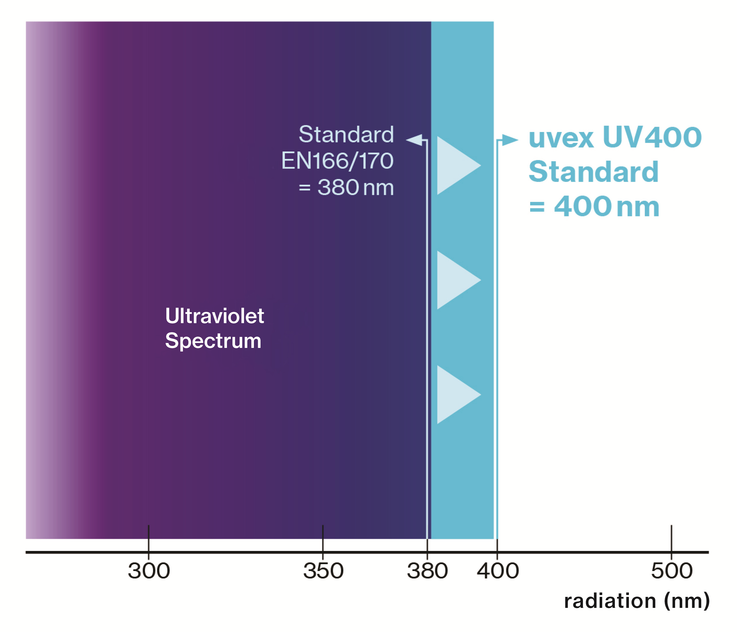

uvex UV400 — included in all uvex safety eyewear
Whether you choose clear or tinted lenses, all uvex safety eyewear is equipped with uvex UV400 effective UV protection as standard — as well as being highly comfortable, sporty in design and featuing top-quality scratch-resistant and anti-fog lens coatings.
Even when there is no sunshine, UV rays are ever-present
When working outdoors, your eyes are regularly exposed to harmful UV radiation — even when it is cloudy. The result: Using insufficient protection poses a risk of dangerous long-term damage.

Even on cloudy days
UV and blue light are always present even on cloudy days due to reflections or scattered radiation in the shade, for example.
UV radiation: Invisible risk to sight
Most people are aware of the effects of ultraviolet radiation on the skin: 95 percent associate UV radiation with skin problems and 85 percent are aware of the risk of tumours.1 However, when it comes to radiation exposure to the eyes, the figures are very different; Only seven percent associate UV radiation with eye disease.1 However, apart from the skin, the eye is the organ most susceptible to sun damage.
1 Transitions UK. Transitions European Study. 2008.
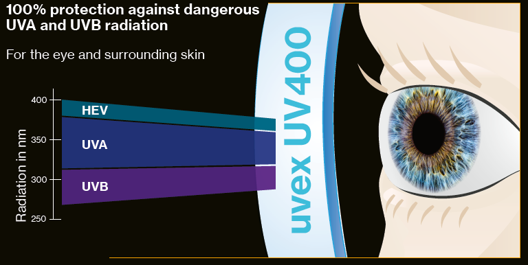
HEV light is high-energy visible light, which appears directly beside UV radiation on the light spectrum. The eye sees this light as a bluish purple. HEV light in the 380 to 400 nm range can have the same effects on the eye as UVA radiation. Furthermore, HEV is suspected of con-tributing to hyperpigmentation, polymorphic light eruption and premature skin ageing.
Find out more about blue light in our blog post.
The sun's UVA rays permeate the atmosphere with very little filtration and penetrate deep into unprotected human tissue, where they can cause indirect damage. This poses a significant risk to the retina and the lens of the eye, for example. Long-term consequences can include cataracts. In addition, UVA rays may have a thermal impact, potentially causing heat damage to the cells of the eye. Finally, UVA rays are suspected of inhibiting human repair mechanisms and therefore could also potentially worsen the damage caused by UVB.
The sun's natural UVB radiation is weakened by the Earth's ozone layer and yet still manages to reach us. If we fail to protect ourselves, this radiation can directly damage human tissue, which can lead to sunburn and in the most severe cases, skin cancer, among other conditions.
Protection for the skin around the eyes: uvex UV400 reliably prevents harmful UV radiation to the skin tissue around the eyes, thereby offering strong protection against cell ageing and the formation of tumours.
Protection for the retina, among other things: Thanks to 100% UVB and UVA protection, uvex UV400 protects the eyes against dangerous long-term damage such as retinal degeneration, cataracts and in the most severe cases, blindness.
Light spectrum
The shorter the wavelength of light, the greater the energy it stores and the more damage the UV radiation can cause. It does not matter whether the UV radiation is natural (sunlight) or artificial (e.g. UV lamps).

uvex CBR65 and CBR75— preventive protection against blue light
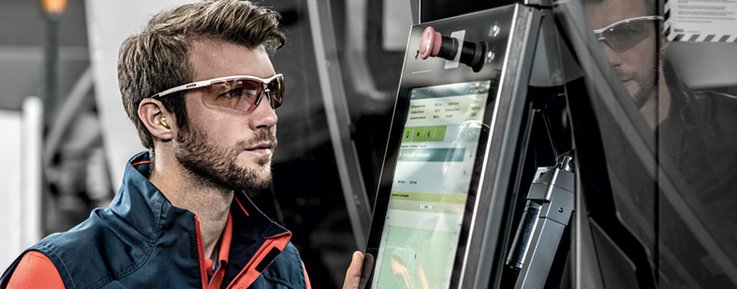
uvex CBR65 and uvex CBR75 — the blue light expert
The uvex CBR65 and CBR75 lens technology has significantly different properties to the uvex UV400. uvex CBR65 completely blocks UV rays, filters the HEV blue light content over 400 nm by a further 50% and only allows 60 to 70% of the light over the 450 nm range to reach the retina. uvex CBR75 tinted lens reduces blue light by up to 40% at 450 nm offering protection against these harmful emissions.
In addition to these protective features, uvex CBR65 and uvex CBR75 offers high-contrast and clear vision — even in diffused light. The slight tint also provides optimum protection against glare.
Find out more about uvex CBR65 and uvex CBR75 here
A change in lighting conditions
Strain on the eye caused by blue light has increased enormously as a result of intensive use of electronic devices (PCs, smartphones, tablets, LED TVs, etc.) and the switch from incandescent light bulbs to LEDs.
The proportion of high-energy blue light in the HEV (high-energy visible light) range is particularly strenuous to the eyes, especially the retina. The short-term effects of this include eye strain, headaches or poor concentration, while in the long term there is an increased risk of age-related macular degeneration.
Next Steps
Backed by 90+ years of optics and coatings science, German-engineering and in-house manufacturing, uvex offers a full range of safety eyewear options for you to choose from. Each option includes our revolutionary lens technology for edge-to-edge optical clarity, along with our supravision anti-fog and scratch-resistant coatings that have been tested in our labs but, more importantly, proven in the field.
If you have any questions or would like to arrange a fit test for your employees, contact us here.
Winners at Work
uvex — leading the way in sports and industry
When developing our products, we benefit from our experience in sport. As a leading international supplier to top sports professionals, uvex proves day in day out that the right equipment is key to success.
uvex: one brand – one mission
Read more about blue light
The hazards associated with blue light — and how safety spectacles can help
Smartphone displays, computer monitors, TV screens — artificial sources of blue light are ever-present, both in our everyday working lives and in our private lives.
Read more in the uvex Expert Blog
uvex — the name is no coincidence
No more UV radiation!
The uvex brand has always been synonymous with optimum protection against UV radiation: Our company name consists of "UV" and "ex" — UltraViolet Exclusion. For many years now, we have been providing advanced eyewear technology such as UV400 as standard.
uvex – the whole story
